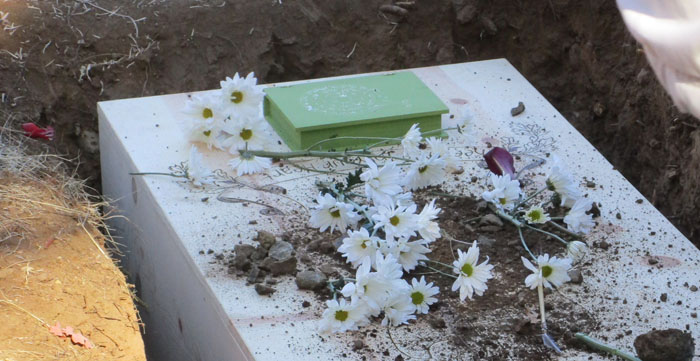The old pagan folks knew their weather cycles well. They marked the equinoxes — the day when light and dark are near equal — and the solstices — when daylight and darkness turnabout for mastery over our days. But they also marked other, intermediate days and nights in the wheel of the year. Their rituals and ceremonies hoped to appease the spirit world, lest those in secret charge of our world be offended.
Some such feast days were full of joy, like Beltane, celebrating the return of blossom and harbinger of summer bounty. We preserve it in the blithe dances of May Day (leaving aside its coöption by labor). Other, more somber feasts recognized that the darkest days don’t wait for the winter solstice… They creep in soon after the fall equinox, when rain and frost presage winter’s deep cold. They had Samhain. We have All Saints and All Souls days to follow Hallowe’en.
A little light in the darkness
Mexicans have decided to leaven the death of summer and sunshine with sweetness. Thus the custom of dressing home altars with paper flowers and sugar skulls, and leaving morsels of food and drink for the dear departed ones beside photographs and mementos of their lives. Dia de los Muertos is everything death is not: colorful, vibrant, raucous.
I find my British and northern European ancestry tends me toward the less boisterous ways of remembering those I have lost to death. Many scholars trace Samhain’s flame-licked wicker effigies down to modern Britain’s Guy Fawkes’ Day bonfires and fireworks. I see it a little differently. The same impulse to push back darkness can give us a quiet and reflective ritual, a ceremony of candles rather than firecrackers.
White Eagle Memorial Preserve recognizes this ancient desire to honor those dear departed ones by hosting an All Souls Day gathering. We gather to “put the cemetery to bed” by pruning dead branches and bitterbrush that could feed wildfire. Those of us with someone interred within the boundaries go visit that special place, to have a chat or place fresh greenery or end-of-season asters and goldenrod. At midday, we gather for a vat of homemade soup, fresh bread and butter, soul cakes with currants. The bonfire snaps with pine cones as we each scatter a handful of sage and lavender “to remember.” A few of us contribute a poem or prayer, perhaps a song.
This year, we must forgo the solace of gathering together. No need to risk lives in these pandemic days…

Song to set the heart free
Timothy’s Polish ancestors bathe graves with candlelight in the ritual of Zaduszki. I can’t do that for him in White Eagle’s tinder-dry wilderness, but I can bring a battery-powered tea light. I can sit, albeit alone, at the great fire-circle near the Eagle gate and burn a sage smudge while I read aloud the names of family and friends I mourn. I’ll bring music to let meander through the pines, including the majestic Rachmaninoff Nunc Dimittis from the Night Vigil. The Latin refers to the prayer “now lettest thy servant depart in peace.” I played it on a little iPod speaker as we showered flowers and prayers on the casket adorned with the words “keep me in your heart.”
In fact, I think I’ll play it again this Sunday as I watch Samhain’s shadows creep across the far hills.

